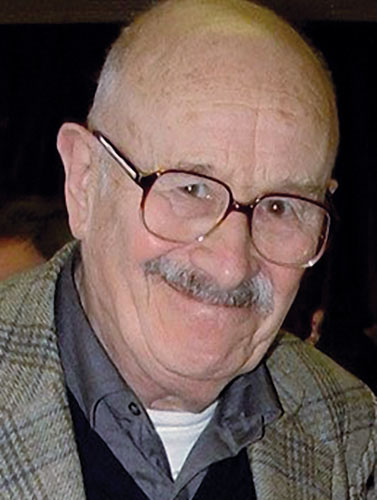Croydon blazes a trail
David Bernstein hopes that Croydon’s makeover
will be as innovative as the town’s ‘hospital-at-home’
programme, which won a Public Services Award
David Bernstein hopes that Croydon’s makeover will be as innovative as the town’s ‘hospital-at-home’ programme, which won a Public Services Award

One advantage of a regular column – and having an understanding editor – is that you can contribute to a discussion without having been asked. So my dismay at not being involved in the burning issue of the future of Croydon was alleviated by the prospect of adding a postscript today.
I was born a north Londoner and went to school near the Angel. In Oliver Twist, Dickens calls Angel ‘where London begins in earnest’. Where it ends in earnest is Croydon.
Croydon gets more than its fair share of verbal brickbats. The image is imprisoned in a 1960s, drab, high-rise environment and, though I agree with John Corcoran (DW 29 November) that its chances of becoming ‘the new Barcelona’ are ‘paella in the sky’, I welcome the vision which sired the hyperbole. It has put Croydon on a more interesting map and it is no more incredible than Corcoran’s calling the town ‘dysfunctional’.
We live ten minutes’ walk from East Croydon station (there are few stations that are as well connected or as frequently served), our house backs on to a park, our bedroom fronts on to trees, a school playing field and a view of distant countryside. Croydon boasts good schools, magnificent shopping and a splendid tram service.
Then there’s the Croydon Primary Care Trust. Never heard of it? Maybe that’s because the design press chose not to cover last month’s Public Service Awards. Croydon PCT was the overall winner, with a design solution that was both simple and imaginative.
The judges commended Croydon PCT for ‘its Virtual Wards scheme that has been able to identify vulnerable patients in order to target admissions and treat people at home’. The hospital setting is traditionally thought of as being safer and better than one in the community. Croydon looked at the either/or situation and asked, ‘Why not both?’. Why not a hospital-at-home programme? That idea is not new. The breakthrough came about through objectively assessing a whole local population, allying it to targeted services and extensive data-sharing. ‘The idea,’ says its progenitor, Dr Geraint Lewis, ‘is to identify those at risk early on and give them the multi-disciplinary support they would get in hospital, but in a ward without walls’.*
The scheme was launched in 2006 with 100 patients in the ‘wards’. There are now 1000 patients in ten virtual wards. There are plans for a virtual hospice and a children’s ward. Interest has been generated in authorities in the UK, US and Australia.
Conventional wisdom decrees that contact between medical professionals can occur only in the comfort zone of an actual ward. Croydon PCT set out to recreate that sense of security by means of electronic notes, daily teleconferencing and the appointment of a community matron, who oversees each ward and provides continuity ‘for those in contact with a range of health services, even attending appointments with patients’. If the patient has to be admitted the matron ‘keeps in contact … and helps to plan their discharge’.
A spokesman for Hays, sponsor of the Public Services Awards, praised ‘the real innovation, improvement and positive change’. May the same values attend the Croydon makeover.
*Extracts from Society Guardian, 28 November 2007
-
Post a comment




